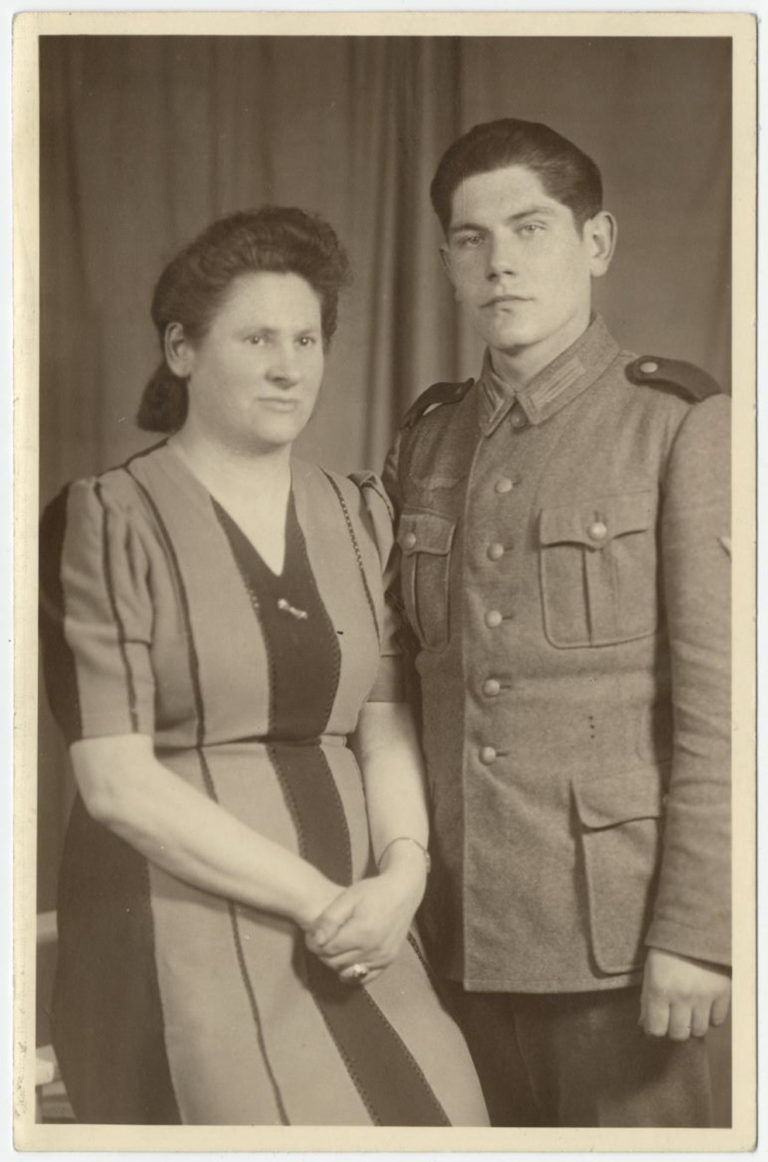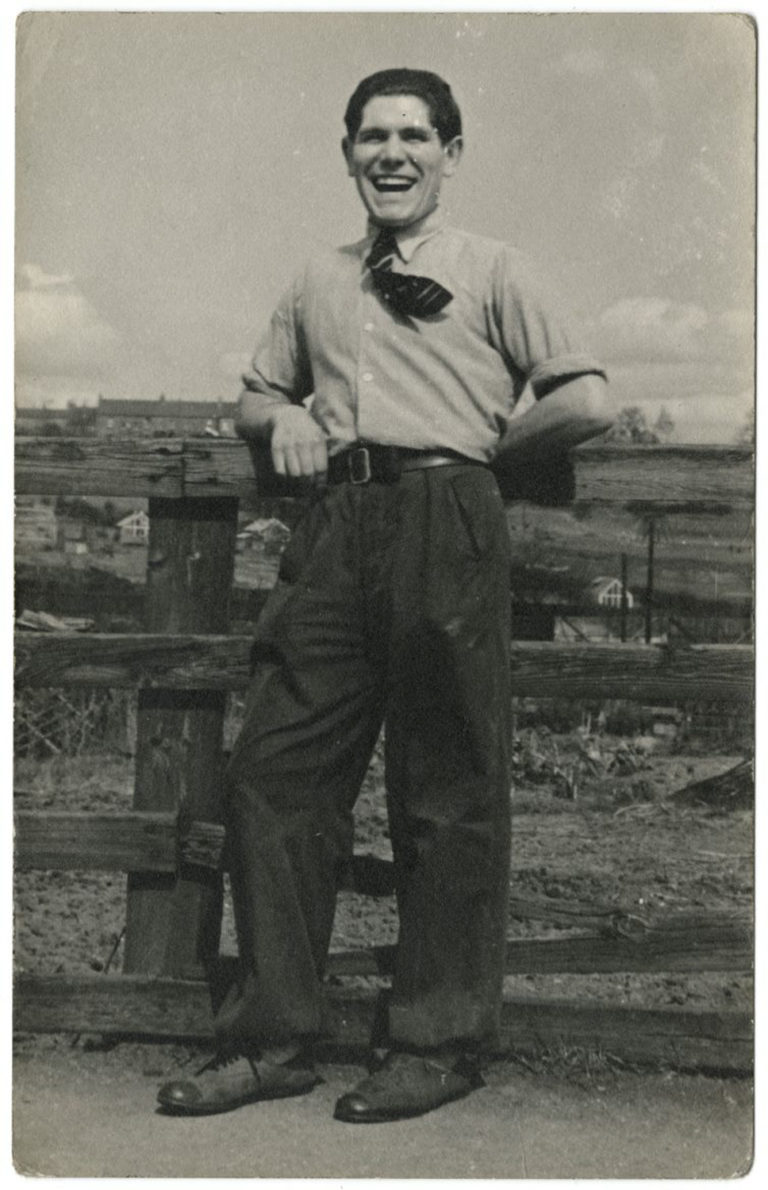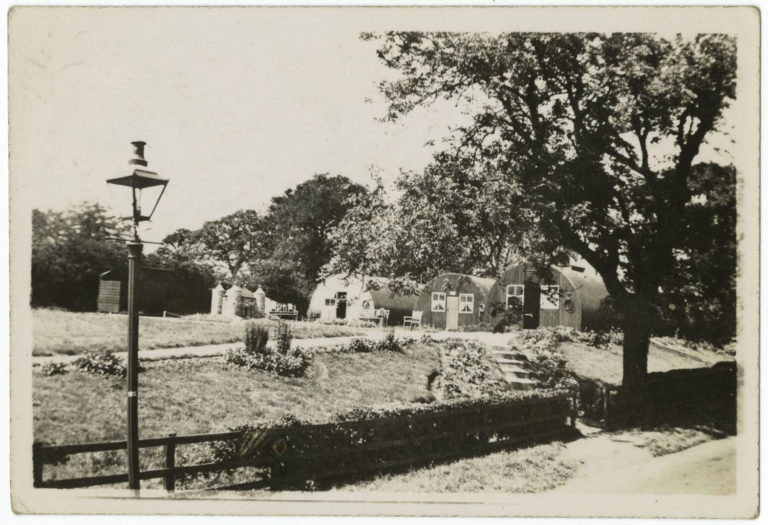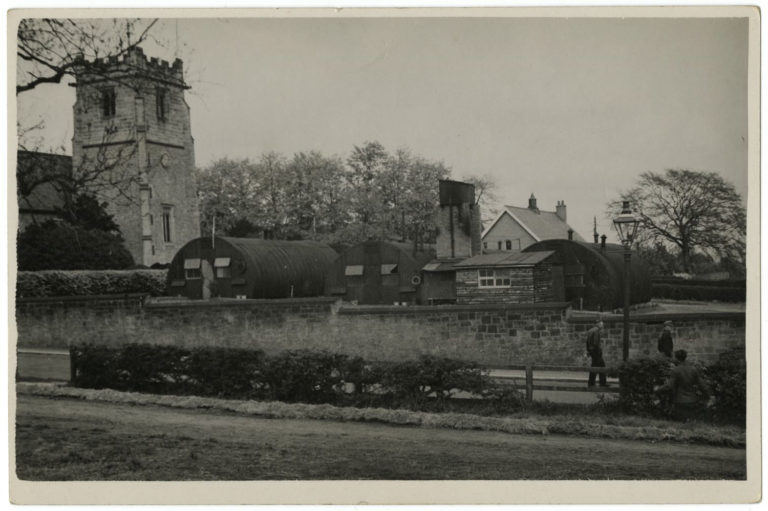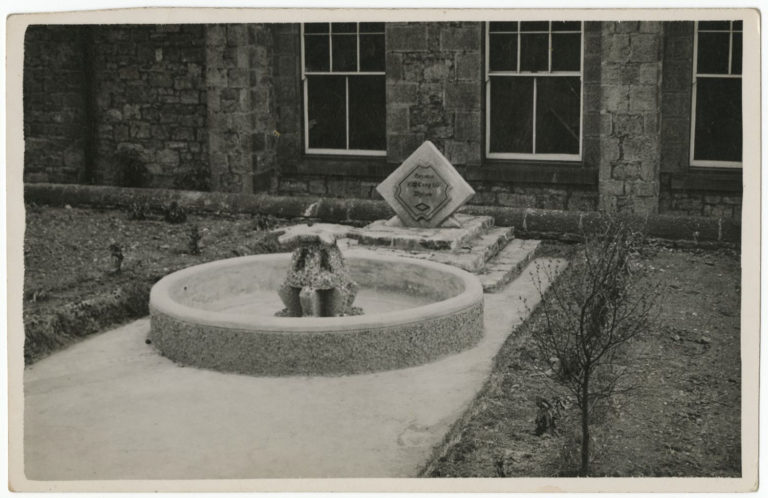Photographs of Rudi Kuhnbaum, Former Prisoner of War, 2008
Reference: NRO 07724/2-4, 9-11
Suggested age groups: KS2, KS3, KS4, Lifelong Learners
Subject areas: Prisoners Of War, WW2, Post-war Europe
CONTEXT
Prisoners of war, often shortened to POW, are soldiers who have been captured and held prisoner by enemy forces during an armed conflict or war.
Enemy forces captured and held POWs for a number of legitimate and illegitimate reasons. Reasons include, to isolate soldiers away from their own side; to show they have won the conflict; to punish or prosecute soldiers for war crimes; to exploit them for labour; to collect military and political information about their opponent; and to recruit the POWs to their own side.
The Third Geneva Convention gives POWs many different rights. The original Geneva Convention dated from 1864 and was added to in 1899, 1907 and 1949 (after the Second World War). The earlier conventions defined the expected treatment of injured enemy soldiers by the international powers that signed them. The Hague Convention of 1929 was the first to address the needs of prisoners of war.
POWs rights under the Third Geneva Convention include:
- They must be treated decently, with respect.
- They must be allowed to tell their families and the International Committee of the Red Cross that they are a POW.
- They have the right to communicate with their families and get packages.
- They have the right to keep their clothing, eating utensils, and personal things.
- They must be given adequate food, clothing, housing, and medical attention.
- If their captors make them work, POWs must be paid for the work they do.
- If they are going to be charged with a crime, they must be given a trial.
- If they are very sick or hurt, prisoners of war have the right to be let go.
- After a war ends, all POWs must be let go quickly.
Prisoners of war also have the right not to:
- Give their captors any information, except for their name, age, rank, and service number (a military identification number).
- Have their money or valuable things stolen.
- Do forced labour, military work, or work that is dangerous, unhealthy, or degrading.
English Heritage have identified over 1000 possible sites of Second World War POW camps in the British Isles. Including seven in Northumberland (see link to Guardian article):
- Featherstone Camp near Haltwhistle
- Darras Hill, Ponteland
- Wooler Camp, Wooler
- Hetton House Camp, Chatton
- Kitty Brewster Camp, Blyth
- Lord Mayor’s Camp, Amble
- Byrness Camp, Redesdale, Otterburn
Wylam was not included on this list, even though we know that there was a camp in the village. Wylam was a small camp and may well have been seen as a part of one of the larger camps in the area.
Around 400,000 POWs lived in British camps during the Second World War. When they were finally released, large numbers decided to stay in this country. Some estimates say 25,000 former prisoners made a new life for themselves here.
The British government encouraged POWs to stay in this country. Especially if they were working on farms producing food (see Hansard link). Conditions for ordinary people in Germany were hard. Most of the towns and cities had been heavily bombed, food and other essentials were scarce.
Boredom was the main problem for most inmates in prisoner of war camps during the Second World War. Rudi Kuhnbaum’s photographs and oral history show that the prisoners at Wylam passed their time by making a miniature castle and a fountain for the village. The prisoners at Featherstone produced the Die Zeit am Tyne newspaper.
Rudi was a German soldier during the Second World War. He joined up in 1939 and fought on the Russian Front. The fighting between the German and Russian forces in the East was particularly brutal. The extreme cold of the Russian winters and the problems of supplying troops with food meant that the German Army lost many men in the East. Rudi fought on the Russian Front for two years.
Rudi was transferred to France towards the end of the war. He was injured and captured by the British, becoming a prisoner of war. Rudi landed in Britain and lived in several prisoner of war camps (see oral history summary for more details). Eventually he was transferred to the camp at Wylam. At the camp he helped to make the miniature castle, which can be seen on the photographs. The prisoners also made a fountain for the community centre in the village (see photographs).
After a while Rudi started working on local farms. He went to live with the Laws family at Heddon on the Wall. Rudi enjoyed working for the family and stayed working on the farm after the end of the war, when he chose to stay in England rather than go back to Germany.
You can read a full summary of Rudi’s oral history on our online catalogue.
Rudi took a series of photographs while at Wylam, including several which show the huts of the POW camp. There are also photographs of the miniature castle and fountain which the prisoners built.
Included in the collection is a formal photograph of Rudi in his German Army uniform with his mother. It was common for men, from all countries, to have a photograph taken when they joined the army.
ACTIVITIES
ACTIVITY 1
Background
Prisoners of war, often shortened to POW, are soldiers who have been captured and held prisoner by enemy forces during an armed conflict or war.
Enemy forces captured and held POWs for a number of legitimate and illegitimate reasons. Reasons include, to isolate soldiers away from their own side; to show they have won the conflict; to punish or prosecute soldiers for war crimes; to exploit them for labour; to collect military and political information about their opponent; and to recruit the POWs to their own side.English Heritage have identified over 1000 possible sites of Second World War POW camps in the British Isles. Including seven in Northumberland.
Rudi was a German soldier during the Second World War. He joined up in 1939 and fought on the Russian Front. Rudi was transferred to France towards the end of the war. He was injured and captured by the British, becoming a prisoner of war.
SEE
See: What are prisoners of war?
See: Who can be made a POW?
See: Why are people made to become POWs?
See: What does the Geneva Convention say about POWs?
See: What does the Hague Convention address about POWs?
See: How many WW2 era POW camps are thought to have existed in the British Isles?
See: How many of these British WW2 POW camps were in Northumberland?
See: When and where was Rudi taken as a POW?
See: Which POW camps was Rudi kept at?
See: What work did Rudi do as a POW?
THINK
Think: Is it right to take POWs?
Think: Why were civilians taken as POWs?
Think: Is there a difference in taking members of the armed forces as POWs than taking civilians as POWs?
Think: What rights do POWs have?
Think: Why were POWs repatriated in Britain?
Think: Why might POWs have wanted to stay in Britain?
Think: Were POWs accepted into local communities?
Think: What was life like in post-war Britain?
Think: Why did post-war Britain have a shortage of workers?
Think: What was life like in post-war Germany?
Think: What challenges did post-war Germany have to face that post-war Britain didn’t?
DO
Do: Create a map showing the different WW2 era POW camps in the British Isles.
Do: Use Google Maps to look at what each of the former POW camp sites look like now. How much have they changed?
Do: Create a map showing the journey Rudi made from his capture in France until his arrival in Wylam.
Do: Design an art piece which could be displayed at a former POW camp site to remember those who were kept there and their heritage.
Do: Research WW2 POW camps in other countries. Compare this to information you have learned about POW camps in the British Isles. How did different countries treat their POWs and what conditions were they kept in?
Do: Research the Geneva Conventions and Hague Convention. Create a poster showing the rights and expected treatments of POWs.
Do: Using your research about POW camps, can you find evidence of the Geneva Convention and Hague Convention expectations not being met?
Do: Using your research about POW camps, can you find evidence of the Geneva Convention and Hague Convention expectations being met?
Do: Research the political, social, and economic climate of post-war Britain and post-war Germany. Create a table comparing their similarities and differences.
Do: Discuss how the Second World War contributed to a rise in immigration to Britain.
Do: Research what it means to be ‘displaced’. Discuss how a POW might have feelings of displacement.
Do: Write the script for a conversation between a British person and a German POW who has decided to remain in Britain. How might they feel about each other; how might they react to each other; what questions might they have for each other; would there be any barriers for communication?
Resources
https://www.iwm.org.uk/history/a-short-history-of-pows-during-the-second-world-war
https://www.nationalarchives.gov.uk/pathways/citizenship/brave_new_world/immigration.htm
https://www.bbc.co.uk/bitesize/guides/zx93tyc/revision/1
https://www.bbc.co.uk/news/uk-politics-51134644
https://www.iwm.org.uk/history/a-short-history-of-german-and-italian-pows-in-britain
https://www.bbc.co.uk/history/british/britain_wwtwo/german_pows_01.shtml
https://www.bbc.co.uk/news/uk-england-nottinghamshire-52547324
https://europe.unc.edu/the-end-of-wwii-and-the-division-of-europe/
https://www.britannica.com/place/Germany/The-era-of-partition
ACTIVITY 2
Background
Rudi took a series of photographs while at Wylam, including several which show the huts of the POW camp. There are also photographs of the miniature castle and fountain which the prisoners built.
Included in the collection is a formal photograph of Rudi in his German Army uniform with his mother. It was common for men, from all countries, to have a photograph taken when they joined the army.
SEE
See: Who took these photographs?
See: Where were these photographs taken?
See: What can you see in each of these photographs?
THINK
Think: What can you learn about Rudi from each of these photographs?
Think: What can you learn about POW camps from each of these photographs?
Think: What conceptions do you have of German soldiers who served during WW2?
Think: Do these photographs support or challenge these conceptions?
Think: Why is it common for men to have photographs taken when they join the army?
Think: Why was boredom the main issue for those in POW camps?
Think: How did Rudi and those in the Wylam POW camp combat boredom?
DO
Do: Look at the Darras Hall, Middle Drive, Ponteland Report. What can you learn about the Wylam POW camp from this report?
Do: Compare the report to Rudi’s photographs. Can you mark on the camp map where Rudi’s photographs may have been taken?
Do: Use Rudi’s photographs and the report to create a plan of what the Wylam POW camp might have looked like.
Do: Using what you have learned so far, and Rudi’s oral history, create a schedule of what a POW’s day or week might have looked like.
Do: Imagine you are in a POW camp. Come up with a list of projects that could combat boredom. Consider the newspaper, fountain and miniature castle created by those in POW camps in the North East.
Do: In groups, have a go at trying one of each group member’s ideas for projects that could combat boredom in POW camps.
Do: Imagine you are going to interview the prisoners at the Wylam POW camp. Make a list of questions that you would like to ask them.
Do: Imagine you are a prisoner held at the Wylam POW camp. Respond to your list of interview questions.
Do: Write a newspaper article using the two parts of your interview.
Resources
https://www.chroniclelive.co.uk/news/north-east-news/surviving-prisoner-war-tells-life-1393108
https://repatriatedlandscape.org/england/pow-sites-in-the-north-east/
Darras Hall, Middle Drive, Ponteland Report Please note – this is a document to be downloaded from Google.
OTHER ONLINE RESOURCES
Hague Conventions 1929: https://ihl-databases.icrc.org/ihl/INTRO/305
Hansard website, page with commons debate on the repatriation of POWs: https://api.parliament.uk/historic-hansard/commons/1947/apr/22/ex-prisoners-of-war
History.com website, page “8 things you should know about WWII’s Eastern Front”: https://www.history.com/news/8-things-you-should-know-about-wwiis-eastern-front
Imperial War Museum website, page about the Eastern Front: https://www.iwm.org.uk/history/operation-barbarossa-and-germanys-failure-in-the-soviet-union
YouTube website, video from US about state of post-war German, 1947 (16 minutes) https://www.youtube.com/watch?v=kjSBZLSpD8Q
YouTube website, clip from Sendung Mit Der Maus (German children’s TV programme) about post-war Germany. Shows photographs of Cologne after the war and in the late 1990s/early 2000s. In German (4 minutes): https://www.youtube.com/watch?v=h-nJGbjIWkg
Prisoners of War
Imperial War Museum website, page about British Prisoners of War in Germany during WW2: https://www.iwm.org.uk/history/what-life-was-like-for-pows-in-europe-during-the-second-world-war
Imperial War Museum website, page about enemy Prisoners of War in Britain during WW2: https://www.iwm.org.uk/history/a-short-history-of-german-and-italian-pows-in-britain
Historic England website, page about Prisoner of War camps in England and Wales: https://historicengland.org.uk/research/current/discover-and-understand/military/prisoner-of-war-camps/
The Guardian website, page with location database of Prisoner of War camps: https://www.theguardian.com/news/datablog/2010/nov/08/prisoner-of-war-camps-uk#data
Irish Times website, article about German Prisoner of War in Britain: https://www.irishtimes.com/culture/books/the-untold-story-of-britain-s-pow-camps-1.3169823
BBC website, article about German and Italian Prisoners of War in Britain: https://www.bbc.co.uk/news/uk-england-nottinghamshire-52547324
Supported by:



